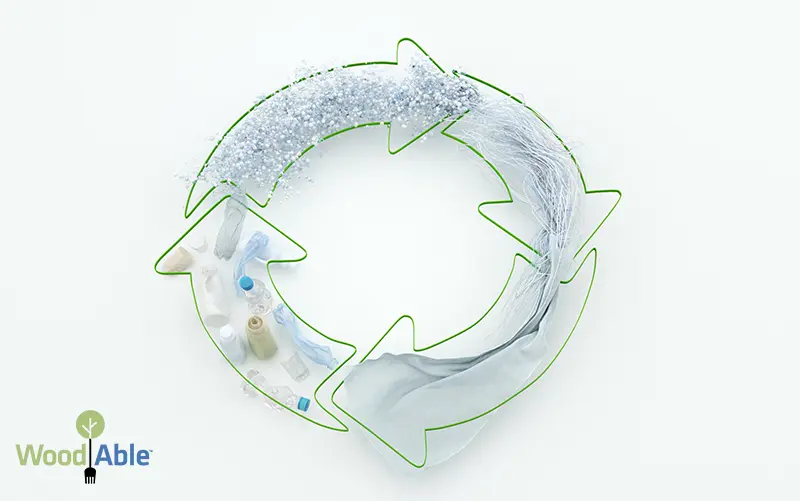WoodAble Blog
Circular Fashion: Turning Waste into Clothing
A complete overhaul is happening in the fashion industry to stop waste and keep textiles ‘in play’ for longer periods of time – perhaps permanently. Replacing the massive waste of fast fashion, this is the new concept of circular fashion.
New fibers are plant-based, made to simulate polyester or nylon. Much of this pulp comes from crushed agricultural waste products: bamboo, seaweed, wood chips, pineapple pulp and banana leaves, instead of using natural resources to grow more cotton or linen.
Next, add color. This can come from a new technique called recycrom, that crushes dyed old fabrics into a fine powder to be used to pigment new fabrics.
All this requires 1) heavy industry partially funded by agro-giants and chemical companies, and 2) new links in the supply chain: companies that specialize in collecting, and sorting garments for recycling, using high-tech digital identifiers and sorting directives, and companies that repair garments for resale, also known as recommerce.
The final touch is an RFID woven into the garment fibers themselves, that identifies the brand, provides theft protection, and enables self-checkout. It could one day include company and garment processing information, such as where to return it for further recycling or as a ‘digital passport’ of where the fabric has been.
All this innovation won’t be successful without retraining the consumer. The Recommerce Behavioral Insight Lab reports that while 92% of those polled say they want to live a more sustainable life, only 16% are willing to take action to change.

